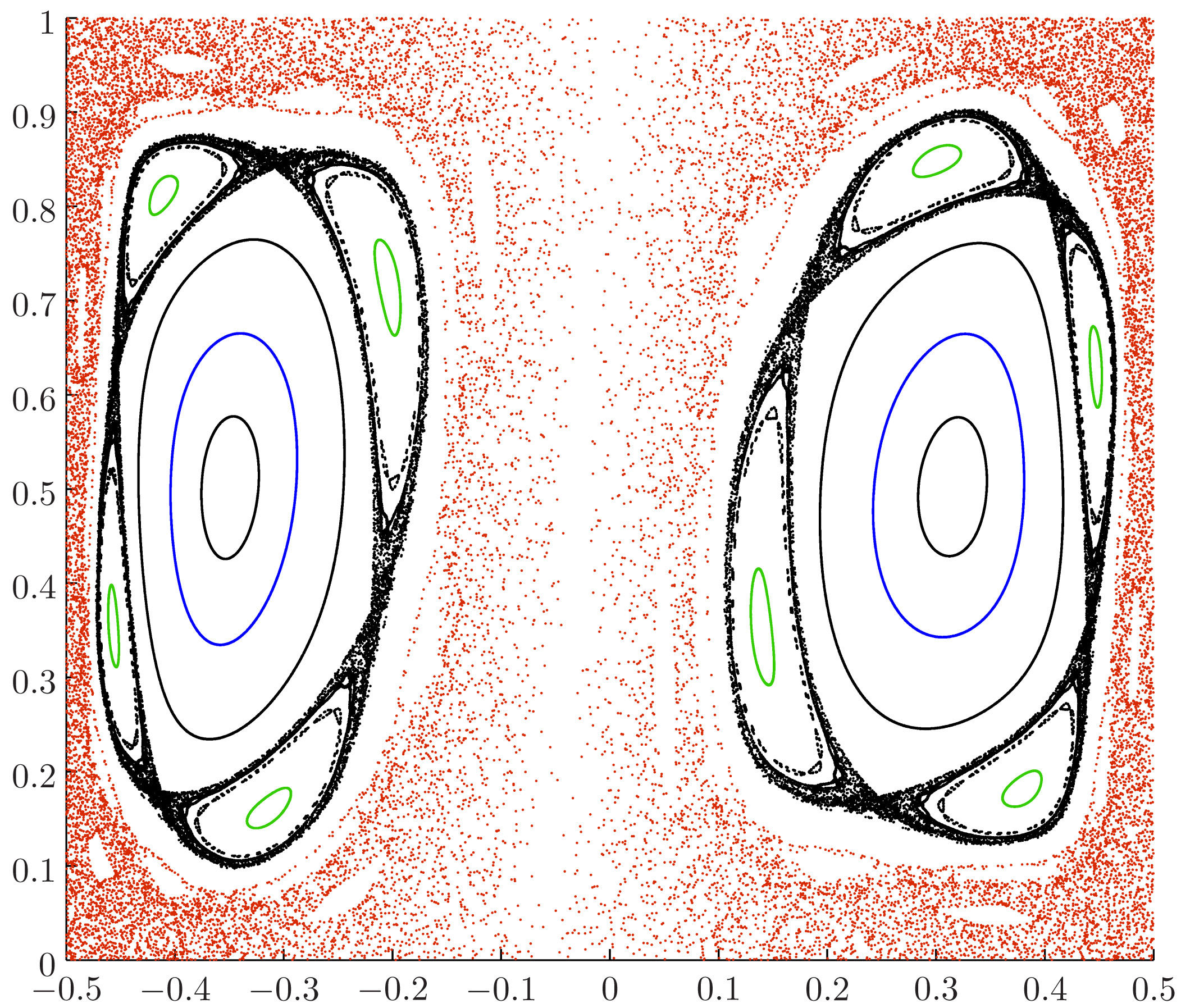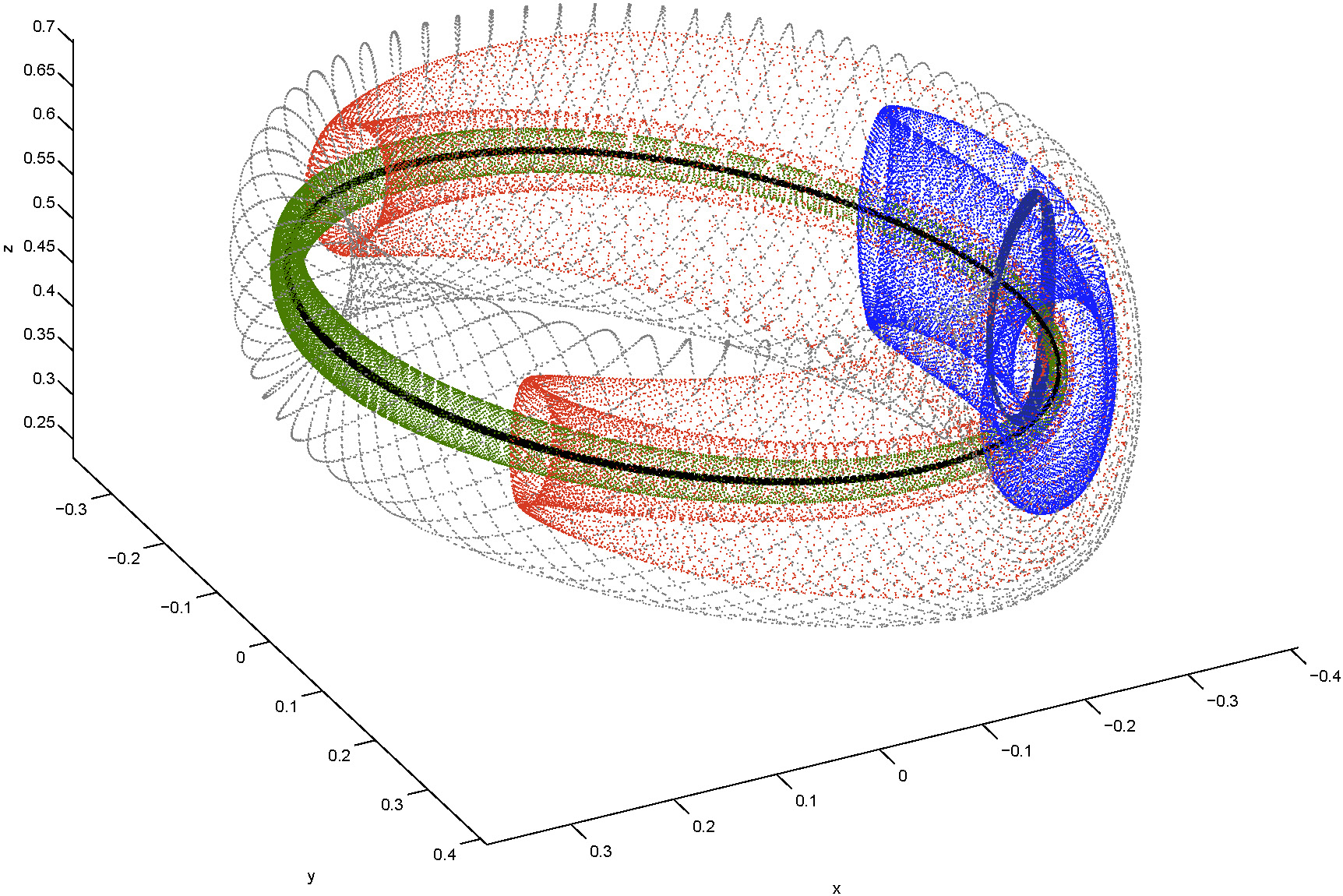Applications of Chaos Theory in the Ocean
Mixing is an important consideration in the understanding of how properties such as heat and oxygen are transferred down from the ocean surface, or how nutrients are brought up from depth. Harmful algal blooms can be locked to such processes. In work with colleagues Irina Rypina and Tamay Ozgokmen, I use chaos theory to try to understand these processes as they might act in an ocean eddy. With this approach, we follow the trajectories of individual fluid elements and try to determine when they get scrambled. In the images presented below, this chaotic mixing occurs in a very non-uniform manner, often in layers sandwiched between non-chaotic surfaces (tori) that resemble doughnuts or twisted hula hoops. One of the challenges of this work is to identify the moving surfaces that act as barriers separating these regions. An even greater challenge is to observe these surfaces in the real ocean.
Pratt, L.J., I.I. Rypina, T. Özgökmen, H. Childs, and T. Bebieva, 2013. Chaotic Advection in a Steady, 3D, Ekman-Driven Circulation. J. Fluid Mech., 738, 143-183.
Rypina, I. I., L. J. Pratt, P. Wang, T. M. Ozgokmen, and I. Mezic, 2015. Resonance phenomena in a time-dependent, three-dimensional, Ekman-driven eddy. J. Chaos., in press.


